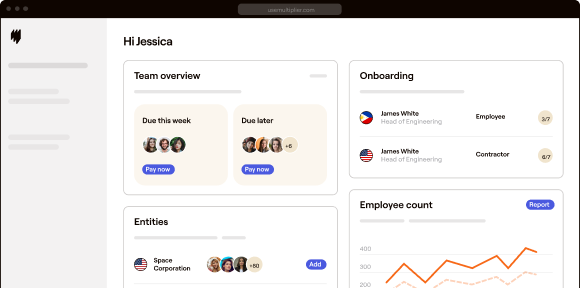The term “quiet quitting” — that dreaded workplace trend — surfaced on social media with the hashtag #QuietQuitting in 2022.
As of 2024, quiet quitting remains a popular, social media-centric, workplace-related phrase alongside “The Great Resignation.”
But really, what is Quiet Quitting?
Quiet quitting means not going over and above the call of duty. A quiet quitter disengages from work and the organization without actually quitting.
This disengagement often occurs gradually, with employees becoming less motivated, less committed, and less involved in their work and team activities. They just show up at work and do the bare minimum without putting in a shift.
The real reasons behind quiet quitting
Employees not willing to go the extra mile can be attributed to several factors.
- Lack of recognition: When employees feel undervalued and unseen, they perceive a lack of appreciation for their contributions. This may cause them to gradually disengage.
- Mismatched expectations: If job roles or responsibilities do not align with employees’ expectations or career aspirations, they may lose motivation over time.
- Workplace stress and burnout: Chronic stress, excessive workloads, and a lack of work-life balance can lead employees to quietly disengage as a coping mechanism.
- Toxic work environment: Poor leadership, interpersonal conflicts, or a lack of support can create a toxic work atmosphere, including emotional and mental drain.
- Personal factors: Health issues, family obligations, or desire for career advancement elsewhere may prompt employees to mentally checkout.
The good news for employers is that they can watch out for key signals that can indicate the onset or presence of quiet quitting.
- Monitoring performance indicators: Keep an eye on changes in productivity, quality of work, and meeting deadlines, as declines in these areas may indicate disengagement.
- Observing behavioral cues: Pay attention to subtle changes in attitude, demeanor, and interaction with colleagues, such as increased withdrawal or decreased participation in team activities.
- Conducting regular check-ins: Schedule one-on-one meetings to discuss progress, challenges, and career goals, providing opportunities for employees to voice concerns or express dissatisfaction.
- Encouraging feedback: Create avenues for anonymous feedback, surveys, or suggestion boxes to gather insights into employees’ experiences and concerns.
- Tracking absenteeism and turnover: Monitor patterns of absenteeism or increased requests for time off, as well as unexpected resignations or transfers, which may indicate underlying issues.
- Promoting open communication: Foster a culture of transparency and trust where employees feel comfortable discussing challenges, concerns, and career aspirations with their managers.
- Recognizing early warning signs: Be proactive in addressing potential signs of disengagement before they escalate, such as decreased enthusiasm, reduced initiative, or withdrawal from social interactions.
- Providing support: Offer resources for stress management, work-life balance, and professional development to help employees navigate challenges and stay engaged in their roles.
The impact of quiet quitting on hiring practices
The impact of quiet quitting on hiring practices and workplace culture is multifaceted. It affects everything from talent acquisition and employee engagement to workplace culture and employee productivity.
- Recruitment challenges: Quiet quitting can create talent gaps and increase turnover rates, necessitating frequent recruitment efforts to fill vacant positions. This continuous cycle of hiring and onboarding incurs significant time, resources, and costs for organizations.
- Attraction and retention: A reputation for high turnover or disengagement may deter top talent from applying to or remaining with the organization, affecting its ability to attract and retain skilled employees. Employers may need to invest in employer branding initiatives and employee retention strategies to mitigate the negative effects of quiet quitting on their reputation as an employer of choice.
- Cultural implications: Quiet quitting can erode trust, morale, and cohesion within the workplace, contributing to a negative organizational culture characterized by apathy, cynicism, and disengagement. This toxic environment not only hinders productivity and innovation, but also undermines employee satisfaction and well-being.
- Productivity and performance: Disengaged employees are less likely to perform at their best, resulting in decreased productivity, lower quality of work, and missed opportunities for growth and innovation. Quiet quitting can therefore have a detrimental impact on overall organizational performance and competitiveness in the marketplace.
- Leadership challenges: Managers may struggle to identify and address signs of quiet quitting among their team members, leading to miscommunication, conflict, and ineffective performance management. Developing leaders’ skills in recognizing and addressing employee disengagement is essential for mitigating the impact of quiet quitting on team dynamics and performance.
Quiet quitting poses significant challenges for hiring practices and workplace culture, requiring employers to adopt proactive strategies for talent management, employee engagement, and organizational development.
By addressing the root causes of disengagement and fostering a supportive and inclusive work environment, organizations can minimize the impact of quiet quitting and build a resilient and thriving workforce.
Addressing quiet quitting: an effective strategy for employers
Employers can implement several productivity strategies to curb quiet quitting and foster a more engaged and motivated workforce.
- Promote a positive work environment: Cultivate a culture of appreciation, respect, and inclusivity where employees feel valued, supported, and empowered to contribute their best work. A true sense of belonging can breed a culture of healthy ownership.
- Leverage technology: Employers can leverage platforms to gain insights into employee satisfaction and performance metrics, aiding in the early identification of signs of disengagement. Integrating such tools seamlessly into an organization’s HR operations empowers employers to enhance employee engagement and address potential issues proactively.
- Provide opportunities for growth: Offer professional development programs, training workshops, and career advancement opportunities to help employees enhance their skills, pursue their career goals, and stay motivated in their roles.
- Recognize and reward achievements: Acknowledge and celebrate employees’ accomplishments, milestones, and contributions through verbal praise, incentives like ESOPs, or benefits, reinforcing their sense of worth and motivation to excel.
- Foster work-life balance: Support employees in maintaining a healthy balance between work and personal life by offering flexible work arrangements, wellness programs, and initiatives that promote well-being and stress management.
- Address underlying issues: Proactively identify and address factors contributing to employee disengagement, such as workload issues, interpersonal conflicts, or lack of resources, taking corrective action to improve working conditions and morale.
- Lead by example: Demonstrate commitment to employee engagement and well-being as a leader by modeling behaviors that promote positivity, communication, and collaboration. Invest in building a culture of trust when employees feel confident enough to speak up knowing their concerns will be addressed promptly.
- Provide opportunities for involvement: Engage employees in decision-making processes, team projects, and initiatives that align with their interests and strengths, empowering them to make meaningful contributions and feel invested in the organization’s success.
Such strategies can help employers create a supportive and motivating work environment that reduces the risk of quiet quitting and cultivates a culture of engagement, productivity, and success.
Actionable tips to balance employee expectations and engagement
Balancing employee expectations and engagement is crucial to ensure clarity, motivation, and alignment with organizational goals.
It helps foster higher morale, productivity, and retention rates essential for long-term business growth and success. There are two fundamental ways to go about it.
- Personalized development plans: Implement personalized development plans tailored to each employee’s skills, interests, and career aspirations. Aligning individual expectations with growth opportunities makes employees feel valued and engaged in their professional development. It fosters a sense of purpose and commitment to the organization.
- Transparent goal setting and feedback loops: Establish transparent goal-setting processes where employees collaborate with their managers to set SMART (Specific, Measurable, Achievable, Relevant, Time-bound) goals aligned with organizational objectives. Regular two-way feedback loops can ensure continuous alignment of expectations. They can provide opportunities for course correction and recognition of achievements, thus maintaining engagement while managing expectations effectively.
Build workplaces where talent thrives
Quiet quitting poses significant challenges to hiring practices. It leads to talent gaps, high turnover rates, and irreparable reputational damage. Quiet quitting is a sign that something is fundamentally wrong within the work environment.
Remember that world-class businesses are not built by employees that do the bare minimum. It’s built by those who are inherently driven and inspired, and given an environment in which they will inevitably thrive.
Having said that, finding star performers in a sea of quiet quitters can be a challenge for employers. It’s problems like these that call for smart solutions like Multiplier which can help organizations hire globally.
What’s more, EORs like Multiplier can unburden organizations by completely handling complex processes like payroll and compliance, including the hiring and onboarding of international talent and freelancers.
In other words, employers can solely focus on employee engagement and workplace culture to effectively address employee burnout, well-being, mental health, productivity, and work-life balance.
To know more, talk to a Multiplier expert today.







